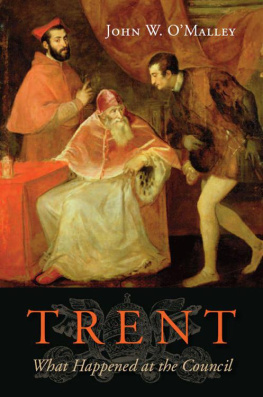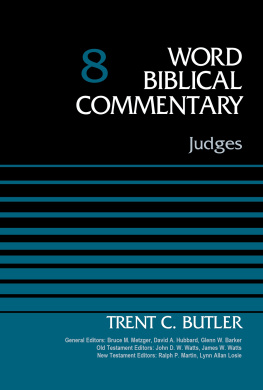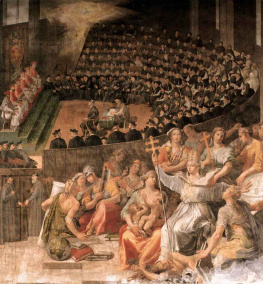

| Nihil Obstat: | Fr. Humbertus Kane, O.P.
Fr. Alexius Driscoll, O.P. |
| Imprimi Potest: | Fr. Petrus OBrien, O.P.
Prior Provincialis |
| Nihil Obstat: | Sti. Ludovici, die 5. Septembris, 1941
A. A. Esswein,
Censor Deputatus |
| Imprimatur: | Sti. Ludovici, die 5. Septembris, 1941
 Joannes J. Glennon, Joannes J. Glennon,
Archiepiscopus |
Copyright 1941 by B. Herder Book Co.
Copyright 1978 by TAN Books.
Library of Congress Catalog Card No.: 78-66132
ISBN: 978-0-89555-074-3
All rights reserved. No part of this book may be reproduced or transmitted in any form or by any means, electronic or mechanical, including photocopying, recording, or by any information storage or retrieval system, without permission in writing from the publisher.
Cover Design by Milo Persic
Cover Art: Seduta del Concilio di Trento nella chiesa di S. Maria Maggiore , with the consent of the Castello del Buonconsiglio Monu - menti e collezioni provinciali. This image may not be reproduced or reprinted in any manner without prior written consent of the museum.
Printed and bound in the United States of America.
TAN Books
Charlotte, North Carolina
2011
Translators Foreword
Some fifteen years ago the writer formed the intention of making accessible to English readers the disciplinary decrees of the ecumenical or general councils of the Church, a work which, with the exception of the Council of Trent, had up to that time received no attention. The fact that the last of these, that of the Vatican, did not issue any such decrees narrowed my field of labor to nineteen councils, leaving, nevertheless, a field still large enough to make anyone who has taken sufficient time to look carefully over the ground hesitant about undertaking the work. The results of these labors, covering the first eighteen councils, appeared in 1937 under the title, Disciplinary Decrees of the General Councils. The present volume covers the Council of Trent, giving the translation and text of its canons and decrees.
The original intention of limiting myself to the disciplinary decisions of the councils could not very well be carried out in the case of Trent without producing a one-sided work amounting almost to a monstrosity. In the list of general councils Trent holds the first place, not only because of its restatement of Catholic doctrine and its initiation of a genuine reform, but also because of its extraordinary influence both within and without the Church. Its purpose was twofold, to define the doctrines of the Church in reply to the heresies of the Protestants, and to bring about a thorough reform of the inner life of Christians. We have become so accustomed to look upon the two parts as one that either without the other seems incomplete. Moreover, it is scarcely necessary to state that the translation of these dogmatic decisions will be of immense advantage not only to the clergy but also and especially to the seminarian and the educated layman. In them the council proclaimed to the world the doctrines that were committed to the keeping of the Church on the day of Pentecost. They are a sign erected on everlasting foundations indicating to the passer-by the straight road along which the Church has traveled ever since that day and along which she will continue to travel till the Day of Judgment. She recognizes no detours, for these lead only to destruction. Again, many of the Councils dogmatic decrees are gems, masterpieces of theology reduced to the briefest possible form, yet sufficiently complete to leave nothing wanting. I make mention particularly of the famous decree on justification, in the working out and formulation of which the spirit of God is easily discernible. The Council spent seven months of arduous labor in formulating that decree as we have it today. There had been no decisions on that point of Catholic doctrine by earlier councils by which to be guided or on which to lean. In the works of the Fathers we look in vain for a definite and satisfactory exposition. The older theologians incorporated what they had to say on that subject in their treatises on grace, while the controversial works of later Catholic writers were more or less tainted by the false doctrine of a twofold formal cause of justification, namely, the justitia inhaerens and the justitia imputata, a compromise contrivance designed to conciliate the heretics. In the reform decrees the reader will find the means employed by the Church to correct and remove prevailing moral evils and abuses.
The first English translation of the canons and decrees of the Council of Trent, so far as I am aware, was made by the Rev. J. Waterworth and published in London in 1848. As is well known, this work has been out of print and off the market for many years. As long as it was available it filled a real need. In 1687 there appeared an anonymous translation. But the work was so poorly done and so unfaithful to the original that it must be regarded as a travesty and burlesque rather than as a translation. Another rendition was made by T. A. Buckley and published in England in 1851. This I have not seen, and had it not been for an item in the catalogue of a London antiquarian some years ago, I would not know of its existence. Whether an English rendering of Trent has ever been made in this country, I do not know. A translation of the dogmatic decrees only was made by an Oxford convert in Catholic Doctrine as Defined by the Council of Trent (Philadelphia, 1869), which is a translation of a series of conferences delivered in Geneva by the Rev. A. Nampon, S.J., under the title, tude de la doctrine catholique dans le concile de Trente.
The Latin text of the canons and decrees given in the second part of this book and upon which the accompanying translation is based, is that of the Neapolitan edition of 1859, which was made from the Roman edition of 1834 issued by the Collegium Urbanum de Propaganda Fide. In transcribing this text typographical errors were corrected by reference to the new edition of the Acts of the council sponsored by the Grres-Gesellschaft in so far as it was available and also to the edition of Le Plat (Antwerp, 1779). In the spelling of certain words changes were made to conform to current usage. In the translation I have endeavored to adhere to the text as closely as possible, that is, to make it as literal as the text would permit, without, however, making that adherence a slavish one. Only direct scriptural quotations, not paraphrases, are printed in italics. For the benefit of those who are interested in a wider acquaintance with pre-Tridentine legislation, references to provincial councils and to the Corpus Juris Canonici will be found more copious and more complete under the Latin text. The references to a few papal bulls are given to indicate the action of popes to enforce the decrees of Trent.
Rev. H. J. Schroeder, O.P.
Contents
BULL OF THE CONVOCATION
OF THE HOLY ECUMENICAL
COUNCIL OF TRENT
under Pope Paul III
Paul, Bishop, servant of the servants of God, for a perpetual remembrance hereof
Recognizing at the very beginning of our pontificate, which the divine providence of Almighty God, not for any merit of our own, but by reason of its own great goodness, has committed to us, to what troubled times and to how many distresses in almost all affairs our pastoral solicitude and vigilance were called, we desired indeed to remedy the evils that have long afflicted and well-nigh overwhelmed the Christian commonwealth; but we also, as men compassed with infirmity, of what is good and the correction of bad morals, to the peace, unity and harmony of Christians among themselves, of the princes as well as of the people, and whatever is necessary to repulse those attacks of barbarians and infidels whereby they seek the overthrow of all Christendom. And that this our letter and its contents may come to the knowledge of all whom it concerns, and that no one may plead ignorance as an excuse, particularly since there may not perchance be free access to all to whom it ought to be especially communicated, we wish and command that it be read publicly and in a loud voice by the messengers of our court or by some public notaries in the Vatican Basilica of the Prince of the Apostles and in the Lateran Church, at a time when the people are accustomed to assemble there to hear divine services; and after having been read, let it be affixed to the doors of the said churches, also to the gates of the Apostolic Chancery and to the usual place in the Campo di Fiore, where it shall hang openly for some time for the perusal and cognizance of all; and when removed thence, copies of it shall still remain affixed in the same places. For by being thus read, published and affixed, we wish that each and all whom our aforesaid letter concerns be, after the interval of two months from the day of being published and affixed, so bound and obligated as if it had been read and published in their presence. We command and decree also that an unshaken and firm faith be given to transcripts thereof, written or subscribed by the hand of a notary public and authenticated by the seal of some person constituted in ecclesiastical dignity. Therefore, let no one infringe this our letter of summons, announcement, convocation, statute, decree, command, precept and supplication, or with foolhardy boldness oppose it. But if anyone shall presume to attempt this, let him know that he will incur the indignation of Almighty God and of His blessed Apostles Peter and Paul. Given at Rome at Saint Peters in the year 1542 of the Lords incarnation on the twenty-second of May, in the eighth year of our pontificate.
Next page











 Joannes J. Glennon,
Joannes J. Glennon,